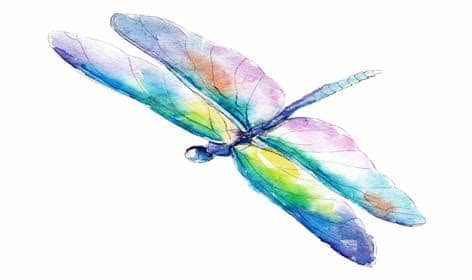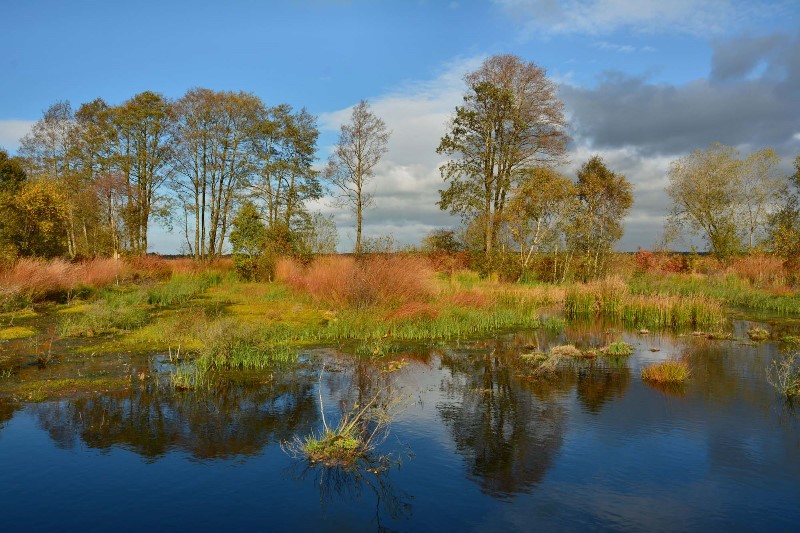This beautiful nature reserve straddling Whitchurch in Shropshire, and Wrexham in Wales, is of international importance for its breadth of habitats and astonishing variety of wildlife. It is the largest raised bog in the UK and part of Britain’s third largest lowland raised bog. Restored and managed by Natural England and Natural Resources Wales since large-scale peat cutting was stopped here in 1990, the reserve supports a huge and diverse range of life. A series of trails through the reserve offer the chance to see and experience the wonderful flora and fauna of the area, where you may be lucky enough to spot the White-faced Darter dragonfly, or hear the haunting, bubbling call of the curlew, both of which are endangered in this country.
THE MOSS TRAILS

These wetlands support bog-loving plants including furry bogmoss, cotton sedge, sundews, and bog rosemary. Look out for the White-faced Darter dragonfly and the Raft Spider. The legs of this large, chocolate-brown spider are covered in hairs, allowing it to run across the surface of the water in search of its prey, which include tadpoles, and even small fish. It will dive beneath the water at the first sign of danger. Divert your walk to take a stroll along the beautiful Llangollen Canal, one of the UK’s most popular waterways, where you might see kingfishers and the dainty Banded Demoiselle damselfly.
THE HISTORY TRAIL
This trail takes you through a timeline of thousands of years, from prehistoric bog bodies to the drainage of the area for peat cutting, agriculture and forestry, actions which almost proved catastrophic for this wetland and the wildlife it supports. Learn about how the Moss was used by the military for rifle and bombing ranges, and its use as a Starfish Site during the Second World War. These sites were large-scale night time decoys which were set alight to simulate a fire-bombed town to attract the attention of enemy planes.
BETTISFIELD MOSS TRAIL
The drainage of Bettisfield Moss for the cutting of peat allowed a self-sown pine forest to eventually colonise the area. This was removed in 2001, allowing the largest uncut area, on the Welsh side, to recover, having been driven almost to the brink of extinction. Travelling through various habitats, including woodland, wet alder carr, and newly restored moss-land, this trail is a great place to see many different coloured bog mosses and butterflies, including rare bog specialist, the Large Heath, a small orange-brown butterfly that always rests with its wings closed. On the underside of the wings is a series of pale-bordered black spots with white dots in the centre.
WHIXALL MOSS BOARDWALK AND THE OLD RAILWAY LINE
From Morris’ Bridge car park, a ramp allows easy access along a level towpath and boardwalk to a restored area of Whixall Moss, a great place to sit and enjoy the expansive views. Disabled visitors can arrange to borrow a key to access the disused railway line to see Fenns’s Moss. You may spot Britain’s largest dragonfly, the Emperor, and acrobatic bird of prey, the Hobby, which hunts them, often biting off their wings before eating them.
SHROPSHIRE WAY LOOP
Created from the Shropshire Way – North, a detour has been created to pass through the Mosses from Bettisfield village to Whixall school. If you would like to explore Bettisfield and Whixall Mosses, a circular walk can be made by following the canal tow path from Roundthorn or Morris’ Bridge to Cornhill Bridge, before following the way-marked route back.
FOR NOW, AND FOR THE FUTURE
Fenn’s, Whixall and Bettisfield Mosses is a unique and precious ecosystem, a haven and refuge for many species, including some which are rare and endangered. It is almost unbelievable to think that such an exceptional and fragile environment was once driven to the brink of extinction. Thankfully, conservation efforts over recent years have helped to restore the delicate balance of nature here, managing and preserving the precious landscape for the benefit of plants and wildlife, and ensuring that its beauty and diversity can be enjoyed for generations to come.
Main photograph from shropshire-guide.co.uk
